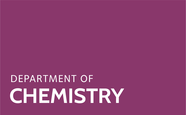The synthesis, structure and anion-recognition properties of a new strapped-porphyrin-containing [2]catenane anion host system are described. The assembly of the catenane is directed by discrete chloride anion templation acting in synergy with secondary aromatic donor-acceptor and coordinative pyridine-zinc interactions. The [2]catenane incorporates a three-dimensional, hydrogen-bond-donating anion-binding pocket; solid-state structural analysis of the catenane⋅chloride complex reveals that the chloride anion is encapsulated within the catenane's interlocked binding cavity through six convergent CH⋅⋅⋅⋅Cl and NH⋅⋅⋅Cl hydrogen-bonding interactions and solution-phase (1) H NMR titration experiments demonstrate that this complementary hydrogen-bonding arrangement facilitates the selective recognition of chloride over larger halide anions in DMSO solution.




